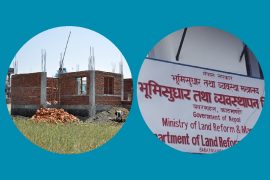Real Estate business gradually took its inclination in the past few years. Since the country took a huge blow in its financial status due to the earthquake and economic blockade. Real Estate market has come to an abrupt halt after the government changed its policies on real estate. The peril started since February when central bank changed its policy towards Real Estate. It has further tightened BFI lending on real estate and home loans. Investors are delusional since the government is frequently trying to minimize trade and business on real estate and automobile industries stating them as “unproductive sectors”.

The central bank’s policy on home loans and real estate has jeopardized business in this sector. On the mid-term review of FYs monetary policy, the central bank capped home loans and real estate to 25% of their lending portfolio. Real estate investment has been marked an unproductive investment and frequently discouraged by the government. The banking regulation on maximum personal overdraft loans was reduced to Rs 7.5 million from the earlier Rs 10 million. This has affected buyers and entrepreneurs alike since they are unable to sell houses and apartments built at huge cost and investment.
The National Shelter Policy, 2012 has projected that around 1,364,000 residential housing units are required in urban areas with around 900,000 new constructions by 2023 to fulfill the demand for housing in the country. Out of the total demand of homes, 2.26 percent is being fulfilled by housing developers while units constructed by the private landowners cover a whopping 97.74 percent at present, according to the Nepal Land and Housing Developers’ Association (NLHDA).

The demand for housing stands at a whopping 40,300 units. This amount is very unlikely to be met in the near future. Similarly, trade and business are also affected by changing policies. Also, the statement given by government on this sector has raised quite a few brows in the sector. Since real estate sector is solely responsible for providing job and work to thousands of Nepalese. It also contributes to the utilization of construction materials and is constantly bestowing opportunities among the workforce as well as the investors.







